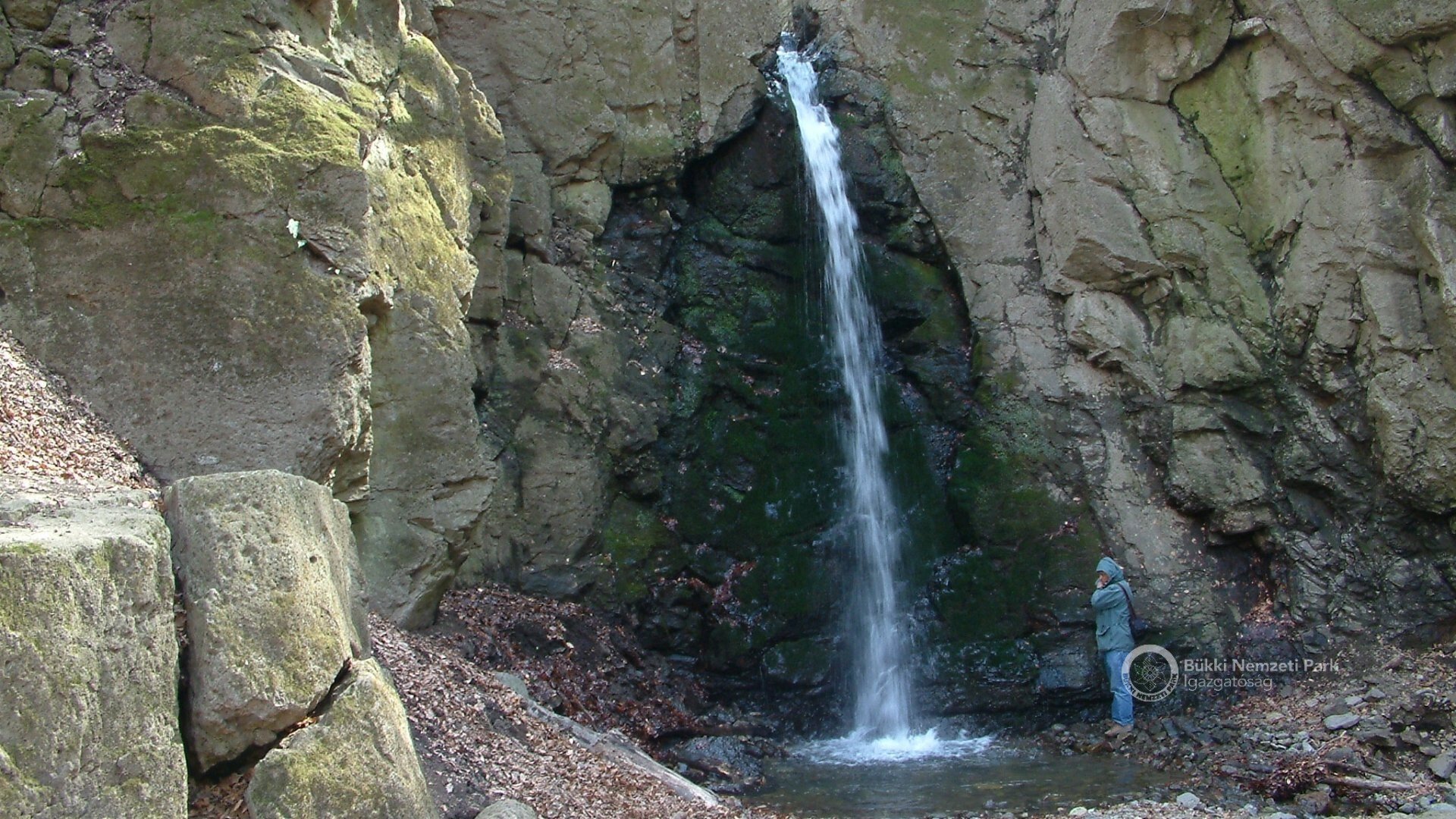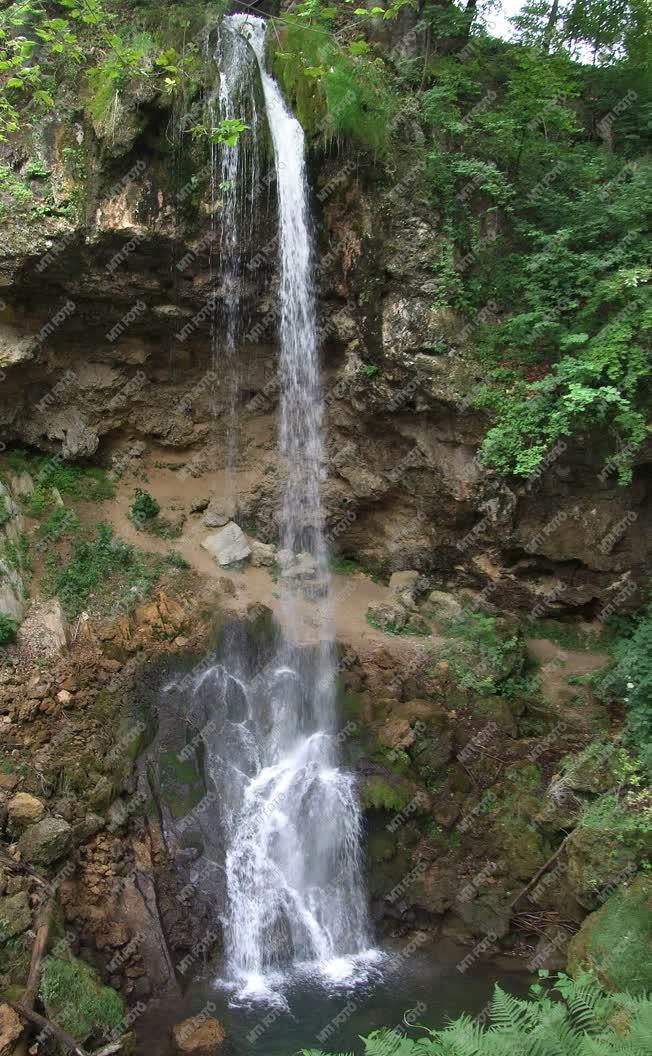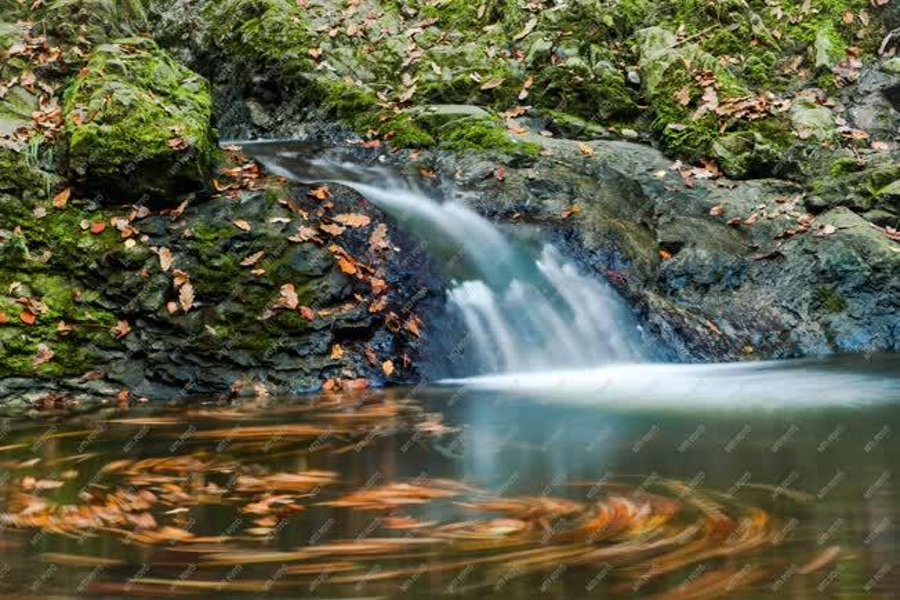Top 10 Most Beautiful Waterfalls in Hungary
- 10 Jul 2023 3:18 PM

The ideal time to visit is spring and early summer, well after the ice and snows have melted, and those April showers have worked their magic.
Here are our ten favourite places to visit, along with their corresponding hiking routes:
1. Ilona Valley Waterfall  Photo: Bükki Nemzeti Park Igazgatóság
Photo: Bükki Nemzeti Park Igazgatóság
This natural feature in the Mátra hills is Hungary’s tallest and highest waterfall. Although thought to be abundant in water, it is still best visited in spring or early summer for the best effect. In the middle of the valley basin, water cascades down from a ten-metre-high cliff between the rocks. Scattered giant tree trunks in the area bear witness to the fact that when the stream floods, it tosses the massive trees like matchsticks.
The valley, the stream and waterfall were named after Ilona Dessewffy, the granddaughter of the former landowner, Count György Károlyi (1802-1877). Close by, at Devil's Dam (Ördög-gát), there is also an almost two-metre-high waterfall that flows in rainy weather, as if foreshadowing the great waterfall.
There are easier and longer hikes that lead to the waterfalls, best approached from the Erzsébet Park Hotel in Parádfürdő about 4km away.
2. Lillafüred
 MTI Photo: Csaba Jászai
MTI Photo: Csaba Jászai
The 20-metre-high Lillafüred Waterfall is Hungary’s largest waterfall in terms of sheerdrop, but since it was created around 1930 during the construction of the Palotaszálló Hotel, it is considered man-made. Part of the water from the Szinva Spring, which feeds the waterfall, is drained by the water utility of Miskolc for the city’s drinking supply. What remains flows here.
During drier summers, this can be insufficient, so water is pumped from Lake Hámori to make it seem more plentiful. However, during rainy weather, it tumbles down convincingly. In harsher winters, ice climbers often practice on the frozen walls. It is easily accessible with a short walk from the car parks at Lillafüred and Felsőhámor, as well as from stops on the narrow-gauge railway that snakes through this side of the Bükk forest.
3. Jegenye Valley Waterfall

Photo: Gergő Horváth - republished with permission
The only waterfalls in the immediate vicinity of Budapest can be found near the city limits, in the Alsó-Jegenye Valley, towards Solymár. This becomes a gorge in several places, where the Paprikás Creek meanders through it. If this winding stream dotted with wooden footbridges isn’t pretty enough, you can reach the five-metre-high Jegenye Valley Waterfall in ten minutes from the main road following the yellow trail (S) markers.
There are steps leading down from the trail to the upper part of the waterfall, but it is also easy to climb down to the lower part. In winter, when it freezes, the waterfall is a particularly magical sight.
4. Ördögmalom Waterfall  MTI Photo
MTI Photo
The Gladiators' Path, or the Spartacus Trail, an officially designated hiking route, leads from Pilisszentlászló to the Ördögmalom Waterfall near Visegrád. Although its name translates as ‘Devil’s Mill’, while not as thunderous as Niagara, this beautiful little cascade was formed in the Apátkúti Valley. The Apátkúti Creek carves out small pools as it cascades into a small basin from a height of 2.5 to three metres.
A shorter walk from Visegrád takes you there, and you can even drive almost all the way there, but you’re treated to the real experience by taking the Spartacus Trail. There is a similar natural wonder in Transylvania, near Biharfürdő, much larger in size.
5. Veil Waterfall - pictured above
It’s pretty likely that more tourist photographs/selfies have been taken of this Hungarian waterfall than any other, as it floats in the Szalajka Valley, one of the country’s most popular hiking destinations.
In rainy weather, the stream cascading down the 17 steps here is truly spectacular, but in the summer heat, it’s reduced to a trickle. To reach the waterfall from Szilvásvárad, it's an easy walk on an asphalt road from the car park, but you can also take a little train all the way there.
MTI Photo
6. Upper and Lower Waterfalls in the Mátras 
MTI Photo
From the car park/bus stop at Mátrakeresztes, it’s only a walk of 600 metres through forest on the P+ hiking trail to an intersection of hiking routes, where you can choose between a closer look at the Upper or Lower Waterfall. To reach the Upper one, it's another 100 metres following the P▲ sign – for the Lower, it's the same distance in the opposite direction, following the PΩ sign.
The big attraction of the Upper Waterfall, besides the water curtain, is the rocky formation called Lyukas-kő or Rock Gate, which resembles a baby deer leaning down for water. The Lower Waterfall, on the other hand, used to be the bathroom of the famous outlaw, Márton Vidróczki. It was only a few steps from his literal man cave to a refreshing water jet for his morning shower.
You can spend hours with children at these two waterfalls, which are more active in rainy weather, but if you still feel like a hike, you can climb up to the incredible Nyikom Observation Post or the top of Muzsla from here.
7. Dömör Gate Waterfall
Szentendre’s own waterfall takes its name from words of Ottoman-Turkish origin, dömör meaning ‘iron’). It’s a notable spot in the Visegrád hills, as this is where one of the larger, if not the largest, waterfalls in the region flows. The water cascades down rocks three to four metres high, under a road bridge from the Bükkös Stream. The waterfall is greater in volume in rainy weather, but it shows its most beautiful face when frozen.
The Dömör Gate Waterfall is accessible from Szentendre by car and by bus at weekends, and only a few minutes’ walk from the car park/bus stop once you get there. While you’re here, you can also go on a decent hike: the 12-kilometre-long Cradle Loop starts and ends here, featuring several interesting sights.
8. Rám Gorge

Photo: Pilisi Parkerdő Zrt
In rainy weather, Rám Gorge, Hungary’s number one hiking destination, begins to gush, creating two beautiful waterfalls in the process. Both are located deep within the gorge, and ladders are available to climb up beside each one.
There are multiple routes to embark on this waterfall-gorge tour, but the most popular is to approach the entrance from Dömös.
9. Római-fürdő Waterfall
Gaja Gorge is one of the most beautiful rock gorges in the Bakony hills, and its most spectacular part is a rock formation called Római-fürdő (‘Roman Baths’), and for good reason. At the beginning of this wild gorge, the water of the Gaja Stream cascades down from a massive rock. In rainy weather, the stone basin in front of the cliff edge fills with water, but in summer, it can occasionally dry out completely.
The rock terrace is a two-kilometre hike from Bakonynána on the Blue Trail. Although you can well imagine Roman legionnaires bathing in these small water-hewn stone basins 2,000 years ago, there’s no evidence to suggest that this was ever an official bathing site.
10. Vörös-kő Spring 
MTI Photo: Péter Komka
Set in the Bükk hills, Vörös-kő (‘Red Stone’) Spring is not a real waterfall nor a true geyser but rather a kind of intermittent karst water fountain. However, if Hungary had ten wonders, this would surely be included. The fan-like water curtain that vertically erupts can be admired primarily in spring, around April, but if May is rainy, there is still a chance to see it in early June.
The effect is caused by the fact that only a portion of the precipitation flowing from the top of the mountain cascades down the surface streambeds. Another part collects in natural pools surrounded by different water-resistant layers in the belly of the mountain and flows out from there.
If the pool is located higher than the outflow opening, the water rushes out with great pressure, as is the case with the nearby Imó-kő Spring. If, however, the opening is positioned in such a fortunate way that the water can only escape upward, then after reaching the appropriate pressure, it shoots out like a fountain nozzle, as in the case of the Vörös-kő Spring. This phenomenon can be approached from Felsőtárkány, in the course of a lovely hike.
Words by Peterjon Cresswell for Xpatloop.com
Peterjon has been researching the byways of Budapest for 30 years, extending his expertise across Europe to produce guidebooks for Time Out and his own website liberoguide.com
























LATEST NEWS IN getting around